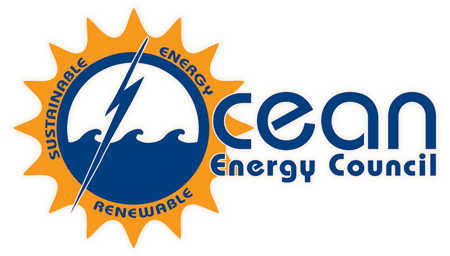A Brief History and Update of The OEC
The Ocean Energy Council was (originally) incorporated in Washington, D.C. in 1979 as an advocacy body favoring the development and implementation of ocean energy. It was formed to formalize a needed communicative and representative vehicle of the international ocean energy community.
Following the Arab Oil Embargo of 1973 a great deal of worldwide attention was given to the pursuit of alternate non-oil sources of energy. In 1977 The U.S. Department of Energy (DOE) was formed bringing together under one roof about 50 different federal agencies including the Energy Research and Development Administration (ERDA) and the Federal Energy Administration (FEA). Among the 11 functions mandated for DOE were: “…management of all forms of energy production…including…energy-technology programs”; research and development of solar-energy resources; “…conducting a comprehensive program of research and development on the environmental effects of energy technologies and programs”, “promotion of competition in the energy industry”, and “responsibilities for conducting a continuing liaison between the Department…and the public”.
From 1973 to l980 the annual DOE budget for Ocean Systems – mostly for OTEC (Ocean Thermal Energy Conversion) – grew from $3 million to $68 million (worth about $100 million in today’s dollars.) Japan, France, The United Kingdom, The Netherlands and others also actively pursued ocean energy. OTEC demonstration plants were built by both the U.S. and Japan, with results exceeding all expectations. The OEC’s activities largely influenced this period of rapid growth. However, a change of administrations in l981 abruptly curtailed attention not only in ocean energy but in all other alternative/solar energy advances. (Attention – and funding – shifted towards oil, nuclear and the military). The original OEC ceased operation in 1982.
The Newly Revived Ocean Energy Council
In the l980’s and 90’s offshore oil production intensified worldwide resulting in relatively low oil prices – until recently – and multiple advances in ocean technology. We have learned to build, operate and maintain huge structures in the world’s oceans to a degree only dreamt of in the early 80’s. Only in the past few years have we acknowledged that oil is not only harder to come by and is rapidly escalating in cost, but is of limited supply. Several European countries are ahead of the U.S. in their pursuit of non-oil energy sources. EnergyOcean 2004 held in June in Florida demonstrated a new focus on tapping earth’s most abundant energy source: the oceans. The time was ripe to revive the Ocean Energy Council, which was incorporated in December, 2004.
